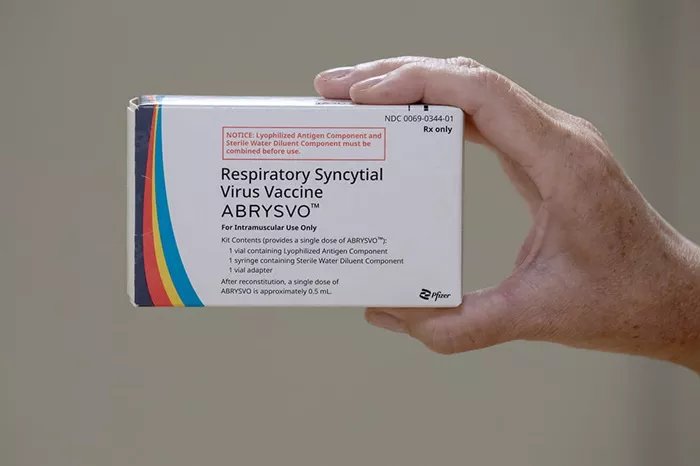The warm embrace of sunlight is often associated with joy and vitality, but for some individuals, exposure to the sun can trigger an unexpected and unwelcome reaction known as sun allergy. This perplexing condition goes beyond a typical sunburn, involving a range of immune responses that can manifest in various ways. In this comprehensive exploration, we delve into the intricacies of sun allergy, shedding light on its causes, symptoms, and effective management strategies to empower individuals to enjoy the sun safely.
Defining Sun Allergy
Sun allergy, also known as photosensitivity or photodermatosis, encompasses a group of conditions where the skin reacts abnormally to sunlight. The spectrum of reactions varies, ranging from mild redness and itching to more severe responses like blistering and hives. Understanding the nuances of sun allergy requires exploring the different types of photodermatoses, each with its distinct characteristics and triggers.
Types of Sun Allergy
Polymorphic Light Eruption (PMLE)
Polymorphic Light Eruption stands out as one of the most common forms of sun allergy. Typically occurring in the spring or early summer after a period of reduced sun exposure, PMLE manifests as an itchy rash with redness and small bumps. While the exact cause remains elusive, this condition often affects individuals with fair skin.
Solar Urticaria
Solar urticaria is characterized by the rapid onset of hives or welts on the skin shortly after exposure to sunlight. These hives can be intensely itchy and may vary in size and shape. The mechanism behind solar urticaria involves an immediate release of histamine triggered by sunlight, leading to the distinctive skin reaction.
Actinic Prurigo
Actinic prurigo is a persistent form of sun allergy, often occurring in childhood and persisting into adulthood. Individuals with this condition experience intense itching, redness, and the development of papules and nodules in sun-exposed areas. Actinic prurigo is believed to have a genetic component, and its chronic nature requires long-term management strategies.
Causes of Sun Allergy
Understanding the causes of sun allergy involves delving into the photobiological mechanisms that underlie these unique skin reactions. While the exact triggers may vary among different types of photodermatoses, some common factors contribute to the development of sun allergy.
Ultraviolet (UV) Radiation
UV radiation, particularly in the form of UVA and UVB rays, plays a central role in triggering sun allergy. These rays penetrate the skin and can induce changes in cellular components, leading to immune responses that manifest as skin reactions. Sensitivity to UV radiation varies among individuals, contributing to the diversity of sun allergy presentations.
Genetic Predisposition
Genetics may play a significant role in determining an individual’s susceptibility to sun allergy. Conditions like actinic prurigo often have a familial association, suggesting a genetic predisposition. Understanding the interplay between genetic factors and environmental triggers is crucial for unraveling the complexity of sun allergy.
Medications and Chemicals
Certain medications and chemicals can amplify the skin’s sensitivity to sunlight, leading to an increased risk of sun allergy. These substances, known as photosensitizing agents, include some antibiotics, diuretics, and non-steroidal anti-inflammatory drugs (NSAIDs). Identifying and managing exposure to these agents is essential for individuals prone to sun allergy.
Symptoms of Sun Allergy
Recognizing the symptoms of sun allergy is key to early diagnosis and effective management. The diverse nature of photodermatoses results in a spectrum of skin reactions, each with its unique set of characteristics. From mild discomfort to more severe manifestations, the symptoms of sun allergy can significantly impact an individual’s well-being.
Redness and Itching
One of the initial symptoms of sun allergy is redness of the skin, often accompanied by intense itching. This occurs as a result of inflammatory processes triggered by UV radiation. Individuals with polymorphic light eruption commonly experience these early warning signs, which can progress to more pronounced reactions if not addressed promptly.
Hives and Welts
Solar urticaria presents with the rapid development of hives or welts on the skin exposed to sunlight. These raised, red, and itchy lesions can vary in size and shape, creating a distinctive pattern. The prompt onset of hives is a hallmark feature of solar urticaria and distinguishes it from other forms of sun allergy.
Blisters and Nodules
Actinic prurigo often manifests as more persistent and severe symptoms, including the development of blisters, papules, and nodules in sun-exposed areas. The chronic nature of these skin reactions sets actinic prurigo apart from other types of sun allergy, necessitating long-term management strategies.
Management of Sun Allergy
Effectively managing sun allergy involves a combination of preventive measures, lifestyle adjustments, and, in some cases, medical interventions. Empowering individuals with sun-safe practices can enhance their quality of life and minimize the impact of sun allergy on daily activities.
Sun Protection
Sun protection is paramount for individuals prone to sun allergy. This includes the regular use of broad-spectrum sunscreen with a high Sun Protection Factor (SPF), protective clothing such as wide-brimmed hats and long sleeves, and seeking shade during peak sunlight hours. These measures create a physical barrier between the skin and UV radiation, reducing the risk of sun allergy reactions.
Photohardening
In certain cases, a process called photohardening may be employed to build tolerance to UV radiation gradually. This involves controlled exposure to increasing amounts of UV light under medical supervision. Photohardening aims to desensitize the skin and reduce the severity of sun allergy reactions over time.
Topical Steroids and Antihistamines
For individuals experiencing acute sun allergy symptoms, topical steroids and antihistamines may provide relief. Topical steroids help reduce inflammation and itching, while antihistamines can counteract the effects of histamine release triggered by sunlight. These medications are typically recommended under the guidance of a healthcare professional.
Preventing Sun Allergy
While managing sun allergy is crucial, adopting a proactive approach to prevent its onset is equally important. Sun safety practices can significantly reduce the risk of developing sun allergy and promote overall skin health.
Gradual Sun Exposure
For individuals prone to sun allergy, gradual sun exposure can be a strategy to build tolerance safely. Starting with short periods of sun exposure and gradually increasing the duration allows the skin to acclimate to UV radiation. This approach, when done cautiously, may help reduce the risk of sun allergy reactions.
Identifying and Avoiding Triggers
Understanding individual triggers is essential in preventing sun allergy. This involves identifying specific medications, chemicals, or genetic factors that may contribute to photosensitivity. By avoiding known triggers, individuals can minimize the likelihood of sun allergy reactions and enjoy outdoor activities more comfortably.
Regular Skin Checks
Regular skin checks enable early detection of any changes or abnormalities, allowing for prompt intervention. Individuals with a history of sun allergy or other forms of photosensitivity should be vigilant about monitoring their skin for any signs of redness, itching, or unusual reactions after sun exposure.
Living with Sun Allergy
Navigating life with sun allergy goes beyond the practical aspects of sun protection and management. It involves fostering emotional well-being, building a support network, and embracing a positive mindset. Recognizing the impact of sun allergy on mental health is integral to nurturing overall wellness.
Seeking Support
Building a support network is crucial for individuals managing sun allergy. Connecting with others who share similar experiences provides a platform for exchanging insights, coping strategies, and emotional support. Online forums, support groups, and advocacy organizations dedicated to sun allergy can be valuable resources for fostering a sense of community.
Embracing Sun-Safe Hobbies
While sun allergy may pose challenges, it doesn’t have to limit an individual’s engagement in outdoor activities. Embracing sun-safe hobbies, such as gardening in shaded areas, enjoying early morning or late afternoon walks, or participating in water activities with proper sun protection, allows individuals to thrive outdoors while minimizing the risk of sun allergy reactions.
Conclusion
Sun allergy may add a layer of complexity to one’s relationship with sunlight, but with knowledge, proactive measures, and a supportive community, individuals can navigate the challenges and enjoy the sun safely. From understanding the diverse types of photodermatoses to implementing effective management strategies and embracing sun-safe living, this comprehensive guide aims to empower individuals with sun allergy to lead fulfilling lives beyond the shadows of photosensitivity. By fostering awareness, building support networks, and prioritizing emotional well-being, individuals with sun allergy can bask in the warmth of the sun while nurturing overall wellness.
[inline_related_posts title=”You Might Be Interested In” title_align=”left” style=”list” number=”6″ align=”none” ids=”3454,3452,3449″ by=”categories” orderby=”rand” order=”DESC” hide_thumb=”no” thumb_right=”no” views=”no” date=”yes” grid_columns=”2″ post_type=”” tax=””]

































